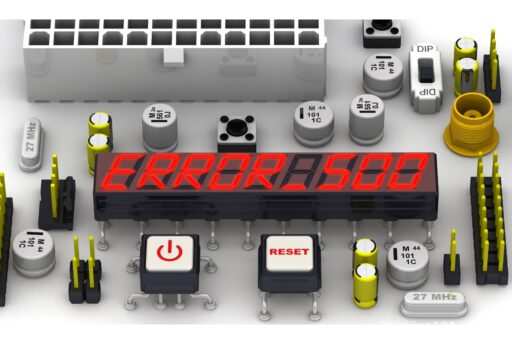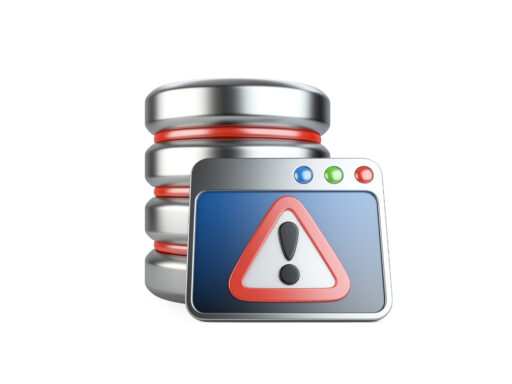The 500 Internal Server Error is the most common and annoying issue WordPress users face. It can hit you out of nowhere and bring down your site, leaving you wondering what went wrong and how to fix it. In this post we’ll walk you through everything you need to know to fix the 500 internal server error like a pro. Whether you’re a beginner or a seasoned WordPress user, this post will give you the knowledge and tools to take on this error.
What is a 500 Internal Server Error?
The 500 internal server error is a generic server error that occurs when the server encounters a problem but can’t give you more details about what went wrong. This error is not related to your browser or internet connection but the server hosting your WordPress site.
When you see the 500 internal server error, it means something has gone wrong but the server can’t figure out what. The error message may vary slightly depending on the server and browser you are using but it usually looks like this:
“500 Internal Server Error”
This error can be caused by many things so it’s hard to diagnose and fix. But by knowing the common causes and solutions you can get your site up and running quickly.
Common Causes of 500 Internal Server Error in WordPress
1. Corrupted .htaccess File
One of the most common cause of 500 internal server error in WordPress is a corrupted .htaccess file. The .htaccess file is a configuration file used by the server to control various aspects of your site, including redirects and permalinks. If this file gets corrupted it can cause a 500 internal server error.
2. PHP Memory Limit Exhausted
Another common cause of 500 internal server error is PHP memory limit exhausted. WordPress and its plugins require a certain amount of memory to function properly. If your site exceeds the PHP memory limit set by your server it can trigger the 500 internal server error.
3. Plugin or Theme Conflict
Sometimes 500 internal server error can be caused by a conflict between plugins or themes on your WordPress site. This can happen if a plugin or theme is poorly coded or not compatible with other parts of your site.
4. Server Configuration
The server hosting your WordPress site can also be the problem. Server configuration issues such as incorrect file permissions or misconfigured server can cause 500 server error.
5. PHP Version
Running an outdated or incompatible PHP version on your server can also cause 500 internal server error. WordPress requires a minimum PHP version to function properly and using an older version can cause errors.
Fixing the 500 Internal Server Error in WordPress
Now that you know the common causes of the 500 internal server error, let’s get into the step by step process to fix it.
Step 1: Backup your site
Before you make any changes to your WordPress site, make sure you backup your entire site. This way you can restore your site to previous state if anything goes wrong during the troubleshooting.
First step to fix the internal server error is to check your .htaccess file. Follow these steps:
- 1. Connect to your site via FTP or file manager in your hosting control panel.
- 2. Go to the root directory of your WordPress installation and find the .htaccess file.
- 3. Rename the file to .htaccess_old.
- 4. Try to reload your site. If the error is fixed, the issue was with the .htaccess file.
If renaming the .htaccess file fixed the issue, you can regenerate a new one by going to your WordPress dashboard, Settings > Permalinks and click Save Changes
Step 3: Increase PHP Memory Limit
If .htaccess file wasn’t the issue, next step is to increase the PHP memory limit. Here’s how:
- 1. Connect to your site via FTP or file manager.
- 2. Go to the root directory and find the wp-config.php file.
- 3. Add the following line of code just above the line that says /* That’s all, stop editing! Happy blogging. */:
define('WP_MEMORY_LIMIT', '256M');
- 4. Save the file and try to reload your site.
If increasing the PHP memory limit fixed this internal server error, the issue was caused by memory limit exhausted.
Step 4: Deactivate All Plugins
If increasing the PHP memory limit didn’t work, next step is to deactivate all your plugins to check for a plugin conflict. Follow these steps:
- 1. Connect to your site via FTP or file manager.
- 2. Go to the wp-content folder.
- 3. Rename the plugins folder to plugins_old.
- 4. Try to reload your site.
If the error is fixed, it means one of your plugins is causing the error. To find the culprit, rename the plugins_old folder back to plugins and reactivate each plugin one by one until you find the one that causes the error.
Step 5: Switch to Default Theme
If deactivating plugins didn’t fix the issue, the problem might be with your theme. To check:
- 1. Access your site via FTP or file manager.
- 2. Go to the wp-content/themes folder.
- 3. Rename your current theme folder to something else (e.g., theme_old).
- 4. Your site will automatically switch to default WordPress theme.
If the error is fixed, the issue was with your theme. You may need to update the theme or contact theme developer for support.
Step 6: File Permissions
File permissions can also cause a this server error. To check and fix file permissions:
- 1. Log in to your website via FTP.
- 2. Check the permissions of your WordPress files and folders. The recommended permissions are:
- Files: 644
- Folders: 755
- If they are not correct, change them to the above.
Step 7: Contact Your Host
If none of the above fix the 500 error, then contact your host. The issue may be server configuration or server itself. Your host can check the server logs and help you further.
Done –
This error can be a scary issue to fix but with the right approach you can quickly find and fix it. Follow the steps above and you’ll be troubleshooting and fixing this error like a pro and your WordPress site will be up and running smoothly.
Remember to always backup your site before making any changes and if you need more help, contact your host. With these tips you’ll be ready to handle this error and keep your WordPress site healthy.





